Constipation isn't just a human problem - many cats struggle with it too, at various stages of their lives.
If your cat has ever shown signs of constipation, you're not alone in your concern. Many owners have reached out to us, sharing their worries and asking for advice.
That's why we've compiled this comprehensive guide, just for you.
Here, we'll teach you everything you need to know about constipation in cats: how to spot it, what to do if your cat becomes constipated, and most importantly, how to prevent it from happening in the first place.
Arm yourself with this knowledge and help your feline friend enjoy a more comfortable and healthier life.
What Is Constipation And What Are Its Symptoms?
We use the term "constipation" to describe one of the following situations:
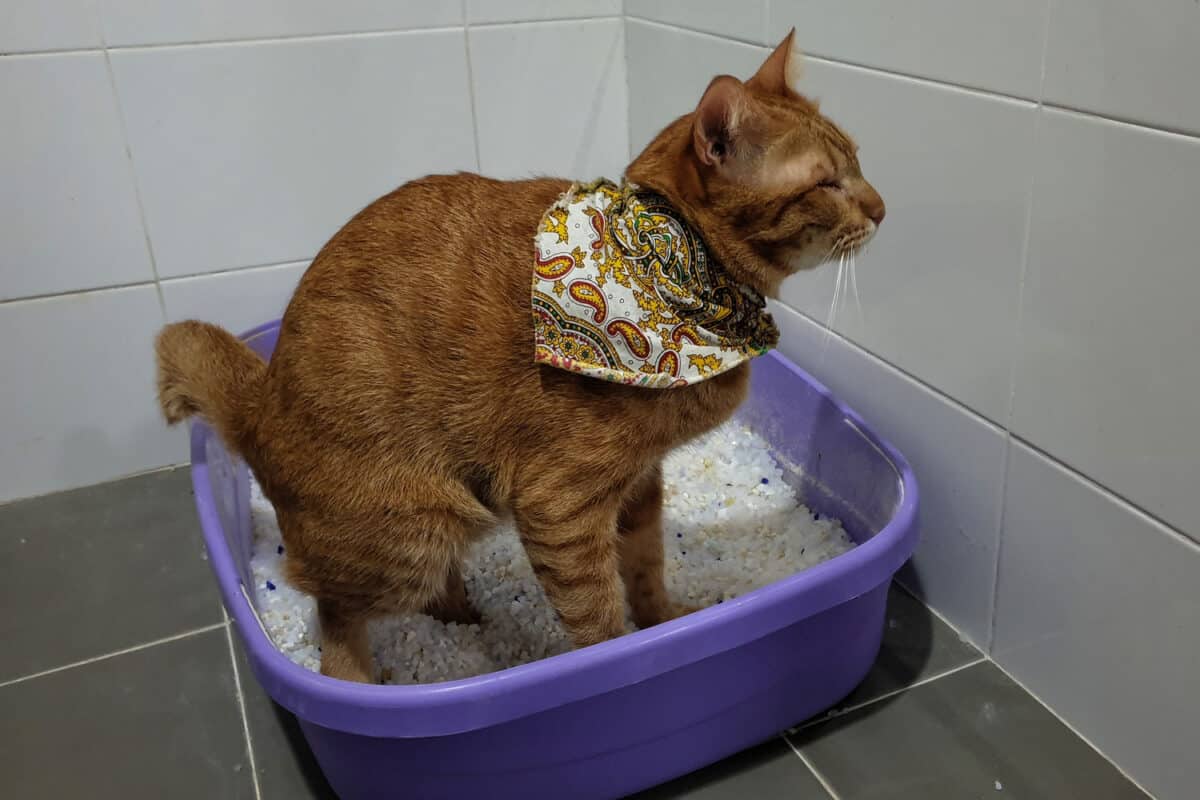
- A cat that passes stools less frequently than once a day.
- A cat that strains and experiences pain when passing stool (we also call this tenesmus).
- A cat that ceases to pass stools altogether (we refer to this as a blockage or obstipation).
In all these conditions, the fecal matter remains in the colon longer than it should.
When this occurs, the walls of the intestines absorb water back into the body, making the trapped fecal matter drier, harder, and more painful to pass through the delicate rectum.
Sometimes, feces become so hard that they simply can't exit the body. This is when severe constipation becomes obstipation, and we describe the cat as "blocked."
Is My Cat Constipated?
To identify constipation in a cat that uses the litterbox, monitor the frequency and types of stools.
If you see a gradual decrease in defecation frequency and observe smaller and harder stools, your cat might have constipation. Cleaning the litterboxes daily can help you spot these signs.
In multi-cat households, where several cats share boxes, identifying the constipated cat can be more challenging.
You might notice one cat straining more than usual during defecation, possibly expressing pain by meowing loudly. Watch for other changes in behavior as well.
A constipated cat often avoids movement and adopts a hunched posture with a lowered head. For more signs of pain, read here: 35 Signs That Your Cat May Be In Pain.
Important Note: Straining in the litterbox and apparent pain during defecation could actually relate to urination.
Cats, especially males, can develop a partial or complete urinary tract or urethra blockage. This is a medical emergency!
Provide urgent medical care immediately, as the cat could die within hours. If your cat strains and shows pain in the litterbox, call your vet or an emergency clinic right away.
What Causes Constipation In Cats?
As described above, anything that makes feces stay inside the colon for longer than necessary can cause constipation.
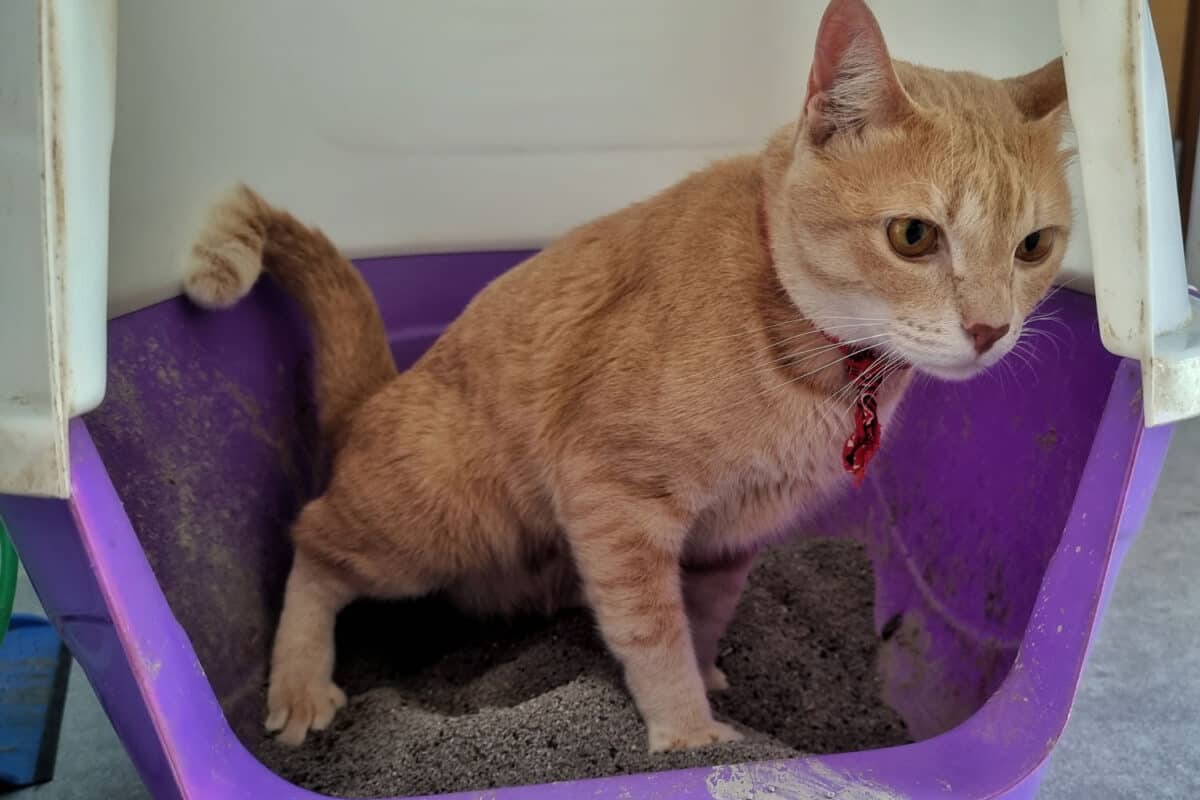
Other conditions cause the fecal matter in the bowels to become harder and drier than it should be. With that in mind, common causes include:
1. Behavior-Related Litterbox Avoidance
Any behavioral problem that keeps your cat from using the litterbox can cause constipation.
Your cat may avoid the litterbox because it's too dirty, or because he or she doesn't like its location or the type of litter used.
Issues of territorial aggression in a multi-cat household can lead to a sense of insecurity when in the box and make some cats avoid it altogether.
The following articles discuss possible causes for behavior-related litterbox avoidance:
2. Pain Induced By Another Medical Condition
Anything that would make using the litterbox painful for your cat can make her or him use it less frequently, eventually leading to constipation.
Possible sources of such pain include abscesses around the anus and impacted or infected anal glands. It's not just the anal area though. Cats use their paws extensively when in the litterbox.
This is why paw injuries and trauma (such as following declawing) could cause a cat to avoid the litterbox and eventually lead to constipation.
Arthritic pain is another possible reason for a cat to avoid the litterbox due to the pain associated with climbing into a litterbox and using those painful joints for digging.
Last but not least, any pain or overall sickness can make bathroom trips too much of a hassle for a cat, eventually leading to fecal matter drying up in the colon and to constipation.
SIGN UP FOR THECATSITE'S EMAIL UPDATES >
3. Diseases And Physical Trauma
Certain diseases and conditions, like some thyroid and kidney diseases, directly impact the digestive system and cause constipation, signaling more serious illnesses that require diagnosis and treatment.
Colon cancer, benign tumors, foreign objects, or large hairballs can also cause constipation.
Pelvic and lower spine injuries, including tail base injuries, can hinder the cat's ability to contract bowel muscles, leading to mobility issues and constipation.
Even after healing, bone deformities may make defecation difficult.
Lastly, idiopathic megacolon is a rare condition where the colon walls become enlarged and lose motility.
It can develop as a primary disease, with constipation as a symptom, or as a risk of chronic or severe constipation.
When it occurs without a history of chronic constipation, we call it idiopathic megacolon.
4. Dehydration
Some cats tend to drink less and can become chronically dehydrated. It may not visibly affect their behavior but can have long-term effects on their kidneys and urinary system.
It can also cause fecal matter to be drier and harder, thus leading to constipation.
5. Dietary Imbalances
Feeding an unbalanced diet can cause constipation (as well as other medical problems). A deficiency in certain nutrients, such as fiber and fatty acids, can cause difficulty with passing stool.
A nutritionally-balanced commercial diet making up at least 90% of the cat's food intake should be enough to create regular bowel movements.
However, giving your cat too many treats or table scraps can lead to constipation or diarrhea and is also linked to more serious health risks.
The same is true of feeding a homemade diet if not using a complete and balanced recipe.
What Are The Risks Of Constipation In Cats And When Should I Take My Constipated Cat To The Vet?
If you see a decrease in bowel movement frequency or harder stools, but your cat seems otherwise healthy, don't worry too much. Still, mention it to your veterinarian at your next appointment.
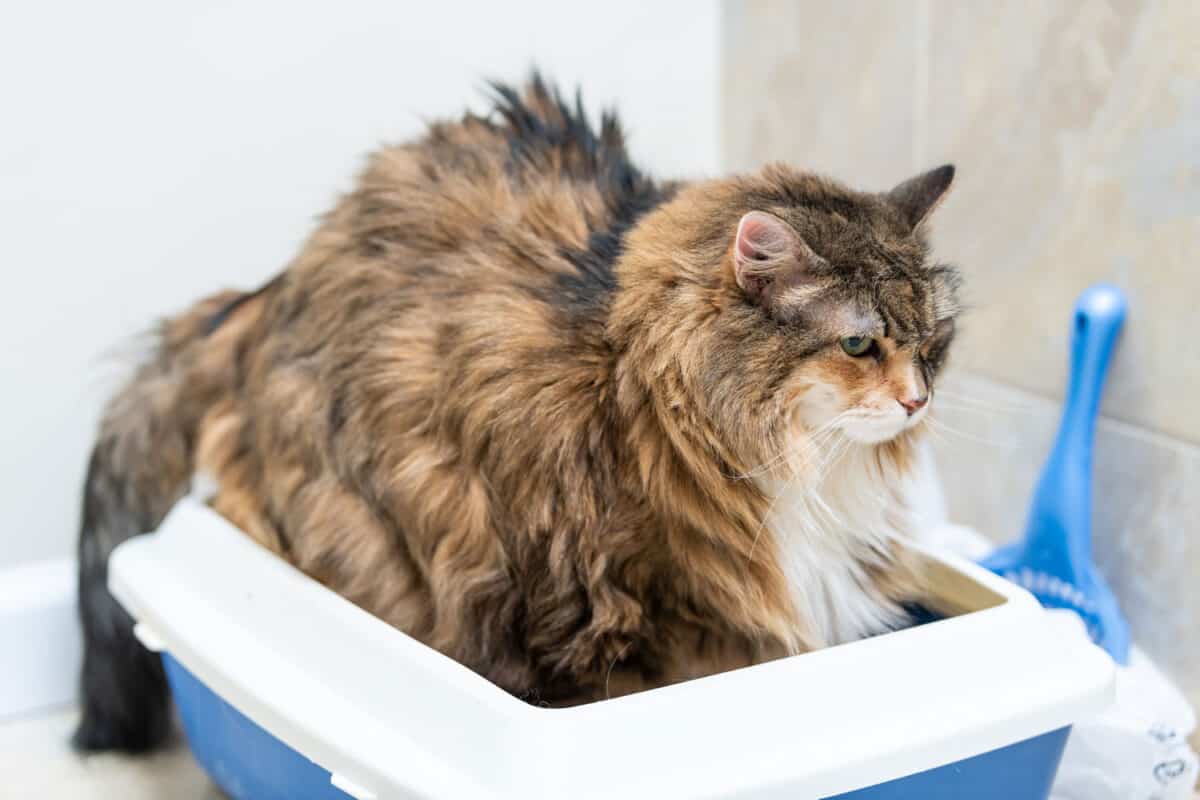
Seek urgent veterinary care in the following scenarios:
- Your cat hasn't produced feces for two or more days.
- You observe straining and pain during litterbox use.
- You notice other symptoms like visible injury, vomiting, lethargy, appetite loss, or noticeable pain.
If in doubt, call your vet for a phone consultation. They'll ask questions to assess the urgency.
Acute constipation and obstipation (complete colon blockage) can be life-threatening.
Untreated, bacteria from fecal matter can cross the colon wall, enter the bloodstream, and cause infection and sepsis.
Even mild, long-untreated constipation can have serious consequences.
Constant colon wall pressure can lead to extreme dilation, sometimes causing irreversible structural changes known as megacolon, which may require surgery.
How Will My Vet Treat Constipation In My Cat?
our veterinarian will ask about your cat's symptoms and perform a physical exam, including feeling the abdomen and checking for dehydration.
For severe or recurrent constipation, your vet might run blood tests, urine tests, a thorough physical exam under sedation, X-rays, ultrasounds, or even a colonoscopy.
For mild constipation, your vet may recommend rehydration, typically via subcutaneous fluid therapy, and suggest a diet change.
If your cat has obstipation and can't pass stool, your vet will manually remove the fecal matter or use an enema to soften and release the stool, typically under sedation.
They might also use various laxatives. Some vets may keep the cat in the clinic to carefully administer laxatives gradually.
Please Do Not Try Any Of These Measures At Home!
Never administer an enema to your cat at home unless your veterinarian has previously trained you and given you direct instructions to do so.
Never manipulate your cat's anus in any way, as you could cause serious injury.
Laxatives could easily kill your cat, even OTC ones. They are safe only under the guidance of a veterinarian who has examined the cat, assessed the need for their use, and adjusted the dosage accordingly.
How Can I Prevent Constipation From Happening Or Recurring?
The ways to prevent constipation are as numerous as the possible causes.
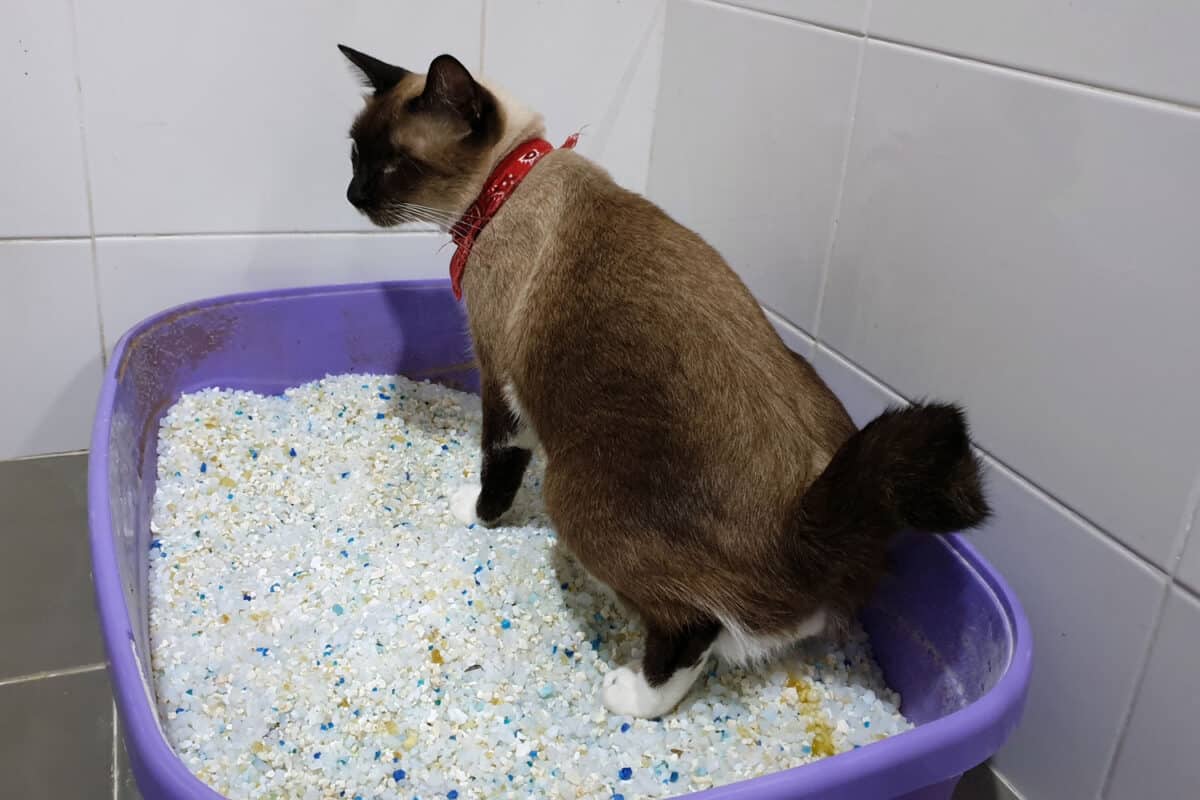
If your cat went through an episode of constipation, your veterinarian should tell you what he or she suspects to be the possible source of the problem and suggest the necessary lifestyle changes to prevent a recurrence.
The following guidelines provide safe ways to reduce the risk of constipation in any cat:
Make The Litterbox Appealing To Your Cat
Litterbox avoidance is one of the reasons cats become constipated. Cats prefer to go in the box, as long as it's clean and suitable for their needs.
Any problems with the litterbox are likely to make the cat "hold it" until she or he can locate an alternative spot. This pattern can soon lead to dangerous constipation.
If you suspect your cat may not be happy with your litterbox setup, you must become an expert on the topic and improve the situation so that Kitty can go to the bathroom happy and on time.
See more about litterbox setup here:
Feed A Balanced And Complete Diet
Choose commercial cat food that offers a quality balanced diet. You can check our cat food reviews for recommendations from TCS members or ask the Cat Nutrition Forum for advice.
If you choose to feed a homemade diet, make sure you stick to a reputable recipe. Limit the intake of treats and other off-menu foods.
Read more here: Unbalanced Diets - Are You Killing Your Cat With Kindness?
Some cats who suffer from chronic constipation may benefit from supplementation with fiber or certain oils. Discuss these with your veterinarian first.
Supplementing can be risky when used in the wrong cases. For example, adding fiber or oil to the diet of a cat suffering from a physical intestinal obstruction will not help and could in fact make things worse.
Encourage Your Cat To Drink More
Dehydration could lead to constipation as water leaves the bowels to go to other areas of the body where it is needed. Increasing a cat's fluid intake could help.
One way to increase daily fluid intake is by feeding more canned cat food.
You can find more tips and ideas in this article: Tips to Increase Your Cat’s Water Intake.
Keep Your Cat Safe And Healthy
Consider keeping your cat indoors only, safe from car accidents and other causes of severe injuries. Make sure your home is safe too, so that your cat doesn't end up ingesting a foreign object.
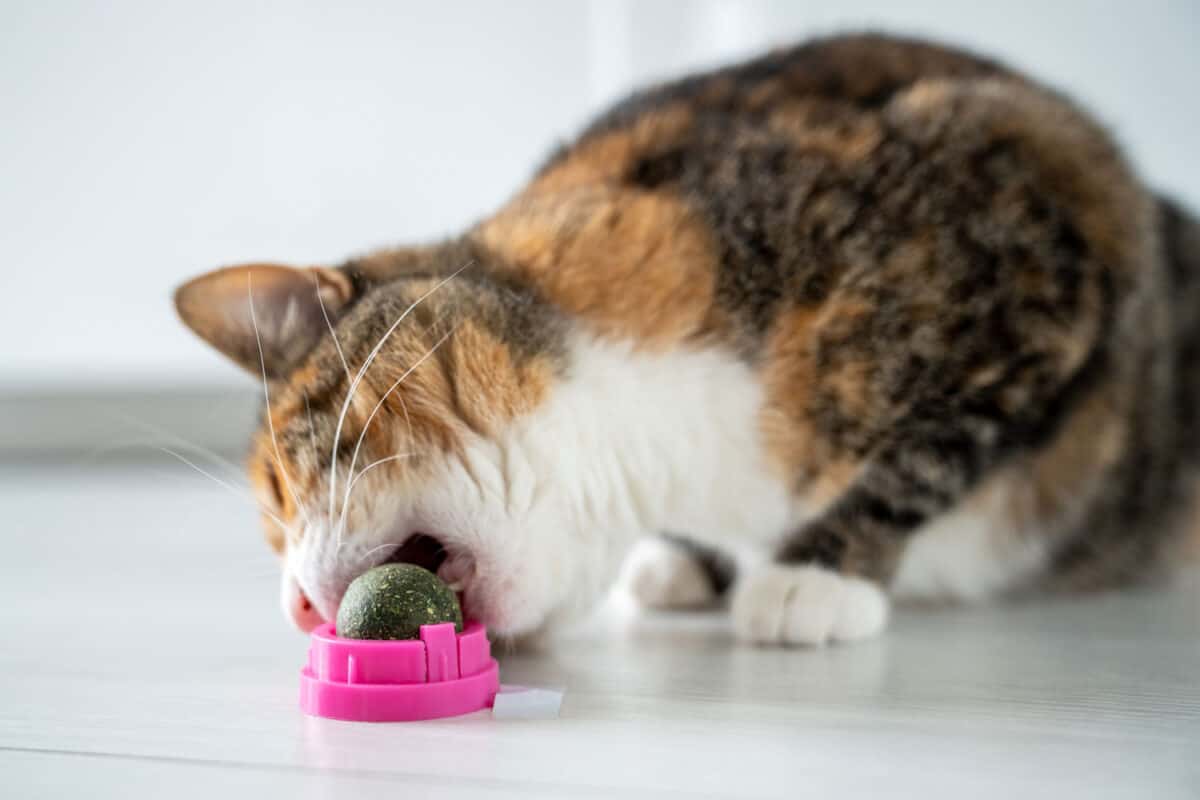
Monitor your cat's overall health and watch for early signs of constipation or any other health issues. Early treatment can help avoid constipation due to illness or injury.
Follow these simple guidelines to help Kitty live a long and happy life, free from constipation!
SIGN UP FOR THECATSITE'S EMAIL UPDATES >
If you're looking for more advice and support, post a thread about your cat's constipation problem in the Cat Health forum.
Note: We may get commissions for purchases made through links on this page.



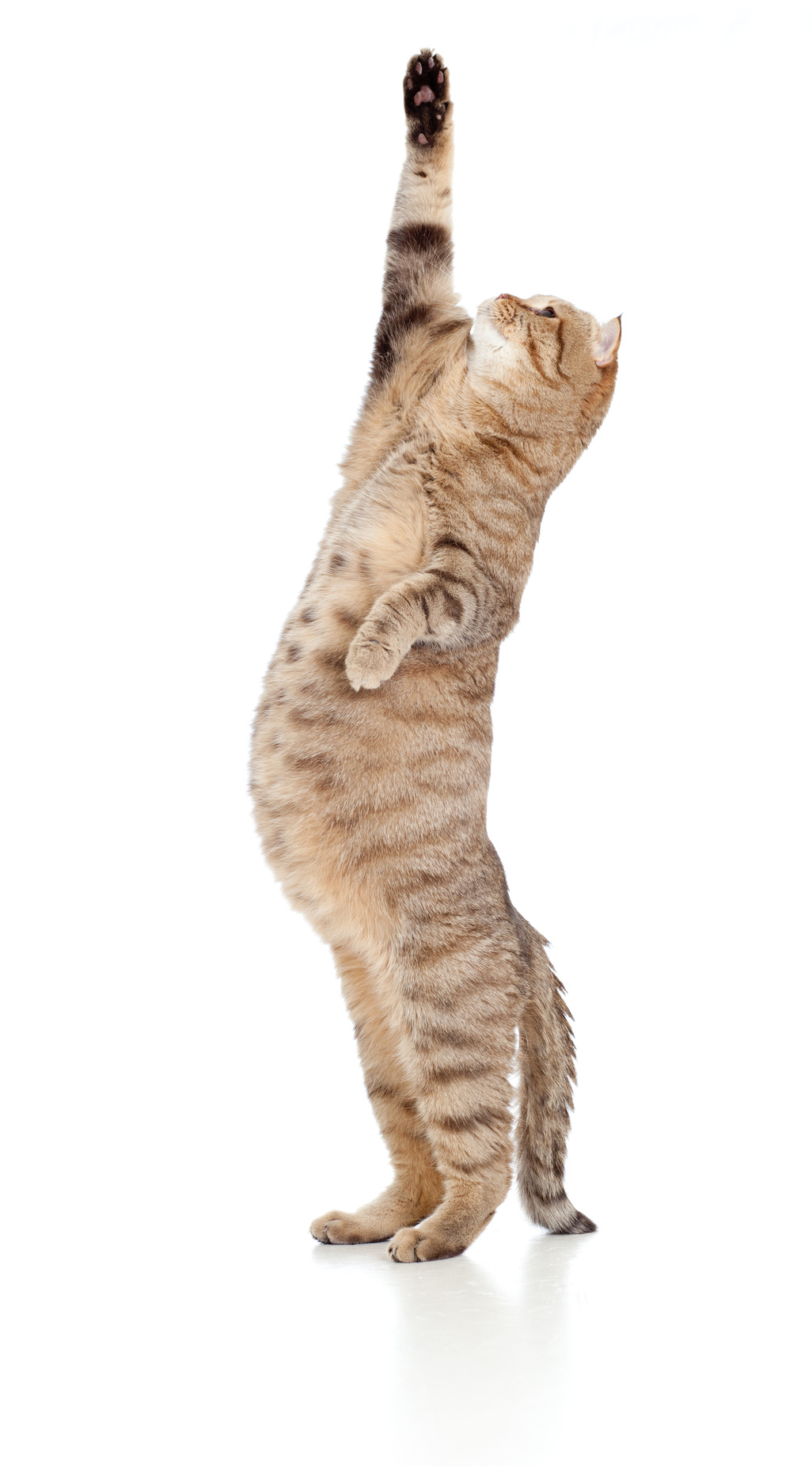
4 comments on “Everything You Need To Know About Constipation In Cats”